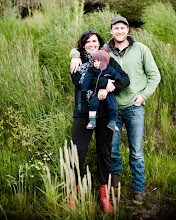
Our first full work week in Indonesia has been highly eventful. We spent the beginning of the week doing some admin stuff at CIFOR (Center for Forestry Research) a branch of the UN that my friend Wendy has been interning for. (CIFOR not only has the fastest internet service in perhaps the whole country, it also has one of the most beautiful compounds complete with a swimming pool, gym and extensive air conditioned library. One needs not go too much further to understand some of the benefits of working for the government in conservation issues.) Tuesday Nick did some photo work around Bogor (our home base for the time being) while Wendy and I prepared for a trip to Borneo where we arranged (through Wendy’s extensive network of Indonesian conservationists) to visit a protected areas for Orangutans and do some cultural sight-seeing.
Wednesday, Wendy and I left early in the morning for our flight to Borneo, with the plan that I would meet Nick in Yogjakarta (his next photo sight in Central Java) on Sunday. I went to bed the night before with a slight upset stomach, which became worse as Wendy and I traveled deeper towards the jungle in Borneo. By noon, we were packed up and ready to hike a few hours into the remote part of the protected area to camp for a few nights in the jungle. I couldn’t make it. By 7 am the next morning, I was in the hospital in Balikpapan diagnosed with acute appendicitis and by midnight, I was in Jakarta being wheeled into the operating theatre.
Appendix-less, I spent the next couple of days in Jakarta’s best hospital room with two of the world’s most loving, amazing friends and a flurry of overly-concerned nurses. Luckily, the surgery only left three small holes and 48 hours later I am back in Bogor resting and catching up on unfinished work. Nick is off in Jakarta taking photographs of a bird market that is famous not only for its birds, but for its illegal selling and trade of both live and dead endangered species. A disappointing experience to miss, but one that I am sure will be well documented by Nick.
On a much more exciting note, tomorrow President Bush will be flying in here by helicopter to meet with the president of Indonesia. The entire city is going to be on lock-down from 6 am to 10 pm. No person may cross the cordon area during those hours, no cell phone or internet service and every 10 meters of the city is guarded by military personnel with machine guns. Coming home from the hospital yesterday, beginning roughly 30 kilometers from Bogor, we noticed armed soldiers in the jungle alongside the motorway. Bridges and overpasses were particularly well fortified. As we drove closer to Bogor, the presence increased to the aforementioned 1 per 10 meter. Our hotel home base is roughly half a kilometer from Bush’s landing spot and our area is particularly well locked down. Tomorrow shall be a rather slothful day next to our pool, unless we decide to attempt to be Reuter’s newest journalist and photojournalist…
There have been mass demonstrations, increasing all week. As I write, I can hear chanting and loudspeakers in the distant. Bush is not very welcome here for some very obvious reasons. But, this anti-Bush sentiment has not translated into all-out, anti-American sentiment. In circumspect, I am not interested in interfering with or experiencing the demonstrations, as mob mentality and behavior rarely reflect the attitude of the individual. But so far, I have felt nothing but welcome in Indonesia by its denizens. Most everyone I have spoken with about Bush’s visit have an informed, cool-headed and eloquent opinion. One that I, and according to the election results, many other Americans share. Hopefully, the actions of a few extreme individuals will not taint the generally open and friendly persona of Indonesia. Only tomorrow will tell…















